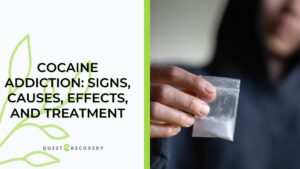Also known as “hippy crack”, “whip-its”, and “nitro,” whippets are cartridges of nitrous oxide, a psychoactive inhalant drug. Nitrous oxide is used to charge whipped cream canisters and is also used as a sedative and anesthetic by dentists and doctors, where it is commonly referred to as laughing gas.
Whippet drugs cause feelings of euphoria when inhaled but are extremely dangerous because they deprive the brain of oxygen. Although nitrous oxide is approved for use in some medical settings, it is not safe to use whippets recreationally because they have a high potential for abuse.
Whippet drugs are easy to get a hold of at gas stations and grocery stores and are among some of the most heavily abused drugs by teenagers worldwide.
How Does Addiction To Whippets Occur?
According to a study published in the American Journal of Medicine, nitrous oxide is addictive because it interacts with opioid receptors in the brain, causing the user to feel intense feelings of pleasure.
Although nitrous oxide is not as addictive as opioids are, inhaling it results in a short-lived high that lasts for up to five minutes which may lead to repeated or binge use. Nitrous oxide also has hallucinogenic properties which may be attractive to certain people and motivate them to keep using it.
Once someone becomes physically dependent on whippets they may keep using them to feel “normal” and avoid experiencing withdrawal symptoms.
Effects of Using Whippets
Although whippets have euphoric and relaxing side effects, they are extremely dangerous. Inhaling whippets deprives the brain of oxygen, which can cause brain damage and sudden death.
Using whippets can also cause Sudden Sniffing Death Syndrome, whether it’s a person’s first or fiftieth time using an inhalant drug. Nitrous oxide can cause frostbite when inhaled directly from a canister, which can damage a person’s nose, mouth, and vocal cords.
Nitrous oxide also affects a person’s B12 levels, a vitamin that is essential for red blood cell production as well as neurological and physical health.
A B12 deficiency can cause fatigue, tingling in the hands and feet, difficulty walking, nerve damage, and blurred vision among other detrimental side effects. Psychological effects of using whippets include paranoia, anxiety, delusions, and other mental health issues.
Long-term side effects of whippet use include organ damage, spinal cord damage, increased risk of cancer, hearing loss, memory issues, and muscle deterioration.
Detox & Withdrawal From Whippets
Although not everyone who uses inhalant drugs will experience an intense withdrawal process, any drug detox should be treated as a potential medical emergency.
For some people, detoxing from whippet drugs can be very dangerous and requires medical supervision. Potential withdrawal symptoms include intense drug cravings, vomiting, sweating, insomnia, anxiety, and hallucinations.
It can take up to two weeks to detox from nitrous oxide, depending on the length and intensity of use. Long-term recovery from an addiction to whippet drugs requires a therapeutic intervention which may include different kinds of psychotherapy and trauma-based therapies.
FAQs
Nitrous oxide is a colorless gas that has a sweet odor and taste. It is commonly used in dental and medical facilities as an anesthetic that can be used to block pain but allows the patient to remain conscious.
By inhaling or huffing nitrous oxide from canisters, cartridges, or from a balloon filled with the gas.
Signs of whippet use include sores around the mouth, red eyes, runny nose, slow motor function, slurring words, loss of appetite, and disrupted sleeping patterns. People using whippets may also have an odd assortment of sweet-smelling balloons or whipped cream canisters in their trash.
Find Your Path to Recovery
At Quest 2 Recovery, our holistic treatment philosophy is focused on the unique needs of the individual. Our knowledgeable and professional team members offer incredible support and guidance to everyone who attends one of our programs and also help oversee the practical details involved with attending treatment to make your path to recovery as smooth as possible.
With a trauma-based approach in a safe, family-like environment, we offer medical detox and tailored treatment plans to help people of all ages learn more about and resolve the underlying issues that cause substance abuse. If you or someone you love is struggling with a drug or alcohol addiction, contact us today.
Sources:
https://withdrawal.net/inhalant/
https://americanaddictioncenters.org/inhalant-abuse/side-effects









